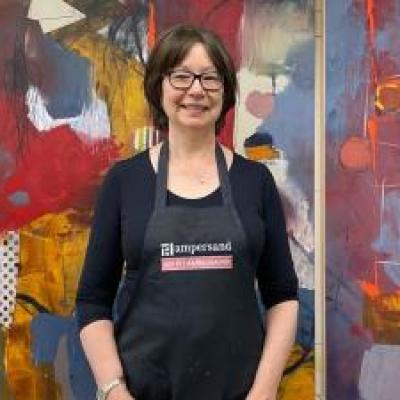More from art and success
More in Politics
Related Blogs
Les archives
Partage Social
The Beginner’s Guide to Making Mixed Media Art
Corps
Create value with what is left in your house with mixed media acrylic!
Here's how I got started with mixed-media acrylic artwork: As January approached, I realized my supply budget would never survive the remainder of the year. For example, no matter how much white paint I order or the projects I work on, I always run out.
This realization, combined with a conversation I had with a nice lady who leads Art and Success' trainings in mixed media painting technique using acrylic, shifted me away from pop art and into mixed media art.
What is mixed media art?
Mixed-media art is a visual type of art that incorporates a range of media into a single work of art. It is related to assemblage, a 3-dimensional sculptural art form in which found objects are assembled together in quirky and unique ways, and collage, which involves the rearrangement of pre-existing elements such as cut-up paper of various types and various other small items glued to the surface of the substrate being used.
If you are new to mixed media art, the best way to get started is to enroll in a mixed media painting techniques beginners' course. However, in this article, I will attempt to provide you with some fundamental guidance toward becoming a mixed-media art artist.
Basic guide to mixed media artwork
Keep in mind that mixed-media art can include 3-dimensional objects as well as cut-up paper, but for the purposes of this article, I will concentrate on artwork that uses a variety of media, including acrylics, oils, crayons, and pencils. But remember, with mixed media art, everything goes!
When getting started with mixed media art, experiment with different combinations of mediums you already know. Don't be hesitant to experiment with new techniques, such as mixed-media acrylic painting. Here are some mixed-media art ideas for you to try:

- Mixed media painting
Painting is one of the most intriguing types of art. Mixed media can be used to create a variety of stunning effects when painting. Even if you have little expertise with mixed-media techniques, you can do this. You can experiment with mixed-media painting with alcohol-based paints or salt. As a beginning in mixed media art, be open to learning skills from a variety of sources, including online research on novel mixed media painting techniques.
It is fundamental to keep an open mind in order to benefit from the unlimited mixed-media creative possibilities. Paint mixes, mixed media acrylic, mixed media canvas, chalkboard paint, spray paint, and fabric paint are some simple ideas to get you started.
- Mixed media acrylic
If you are new to the field of mixed media art or are simply enthusiastic about the various varieties of acrylic paint available to assist you create mixed media magic, a quick course from a mixed media painting technique professional would be beneficial.
Acrylic paints, which are water-based paints made up of pigments suspended in an acrylic polymer solution, are ideal for layering. Try them out and learn while you're on the go!
- Mixed media painting techniques
One of the many advantages of mixed media painting is the overwhelming range of techniques available. Painting, drawing, layering, collage, texturizing, the peel-paint effect, mono printing, rubbing, slicing, weaving, frottage, and many more methods are used. Don't be afraid of becoming lost in the sea of possibilities. Allow yourself to indulge and uncover your unique voice while you learn by doing!
Aside from the mixed media painting techniques, mixed media acrylic, and mixed media painting that I have discussed in this post, there are many other possibilities for mixed media art. You can, for example, elevate everyday clothing by overlaying it with your own unique combination of patched or specialty buttons.
This article seeks to fire you up to wake up and go to your local thrift store for some unique finds that you can mix and match to turn pretty much anything into a one-of-a-kind mixed media art piece. Start the journey now, for the sky will be the limit!











commentaires